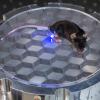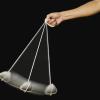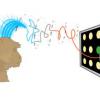News and Press Releases
Aug 27 2015
The Stanford Neurosciences Institute awarded their first round of Seed Grants, funding five projects, each of which brings together two or more faculty members to solve problems within the field of neuroscience.
Aug 26 2015 | Stanford Medicine - News Center
A mutation linked to amyotrophic lateral sclerosis interferes with the transport of proteins in and out of a cell’s nucleus. Targeting this pathway with drugs or therapies may one day help patients with neurodegenerative disease.
Aug 20 2015 | Stanford News
Stanford psychologists found that applicants for microloans are more likely to win approval if the photograph they send along with the application evokes a positive emotional response.
Aug 20 2015 | Stanford Medicine - News Center
Scientists found that when two protein structures in the brain join up, they act as an amplifier for a slight increase in calcium concentration, triggering a gunshot-like release of neurotransmitters from one neuron to another.
Aug 18 2015 | Stanford Medicine - News Center
Gray matter volume and connections between several brain regions better forecast 8-year-olds’ acquisition of math skills than their performance on standard math tests.
Aug 17 2015 | Stanford News
A blue glowing device the size of a peppercorn can activate neurons of the brain, spinal cord or limbs in mice and is powered wirelessly using the mouse's own body to transfer energy. Developed by a Stanford Bio-X team, the device is the first to deliver optogenetic nerve stimulation in a fully...
Aug 17 2015 | Stanford Report
Physicists at Stanford and the University of British Columbia have found that encouraging students to repeatedly make decisions about data collected during introductory lab courses improves their critical thinking skills.
Aug 7 2015 | SLS Blogs / Law and Biosciences Blog
The science for identifying a likely pattern of neuroimaging results strongly associated with the subjective sensation of pain keeps improving.
Jul 31 2015 | BeWell@Stanford
BeWell spoke with Dr. Greicius about Alzheimer’s disease — more commonly diagnosed in women than in men — to learn more about the causes, onset, progression and treatment of this currently incurable neurological disease.
Jul 31 2015 | Stanford News
Years of work have yielded a technique that continuously corrects brain readings to give people with spinal cord injuries a more precise way to tap out commands by using a thought-controlled cursor. A pilot clinical trial for human use is underway.













